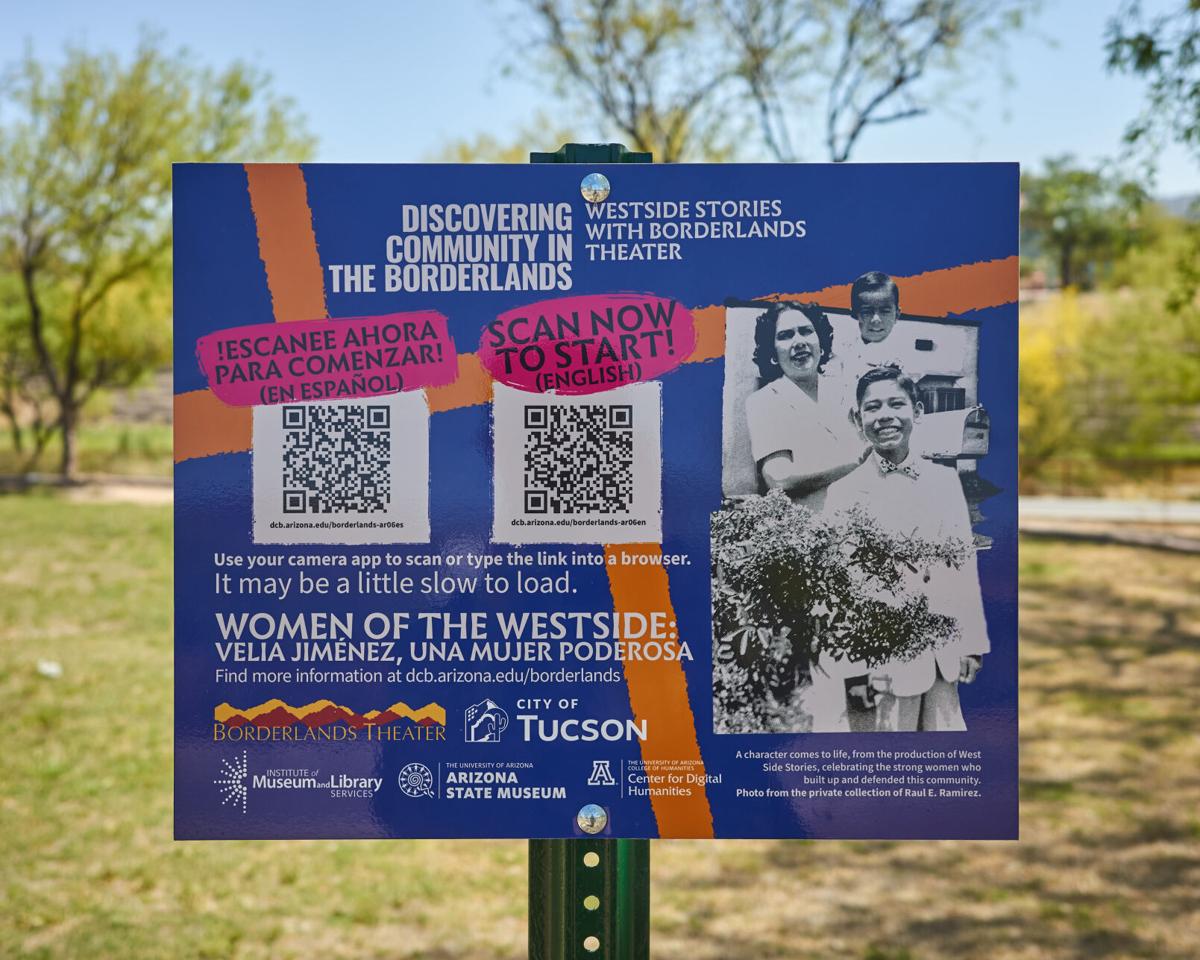A new community-curated exhibition is telling stories of Tucson’s rich, diverse cultural history through augmented reality.
Tucsonans can find the exhibition’s QR codes in various spots across Tucson including the Arizona State Museum on the University of Arizona campus, Bonita Park on the city’s west side, the Tucson Convention Center's Linda Ronstadt Music Hall, Mission Garden, the Tucson Chinese Cultural Center and Dunbar Pavilion.
When scanning the QR codes, people can access AR elements such as 360-degree videos, 3D objects, historical photos and documents, oral histories, poems recited in five languages and more.
The “Discovering Community in the Borderlands” exhibition aims to help locals and visitors learn more about the city’s diversity while making the history of Tucson communities easily accessible to everyone.
“The stories and the materials included are shared and developed by members of the communities they represent,” said Lisa Falk, the head of community engagement and curator of education at the Arizona State Museum. “For me, it's super important that we learn from the community and that those communities' voices are the ones that are telling their stories, that they're not filtered through an academic lens, but that they're actually in the words from that community and that we're just helping make them accessible.”
Falk and the Arizona State Museum spearheaded the project in collaboration with the UA Center for Digital Humanities who developed the AR content, the UA Poetry Center, Borderlands Theater, Mission Garden, the Tucson Chinese Cultural Center, Dunbar Pavilion and the Pascua Yaqui Tribe’s Department of Language and Culture.

The University of Arizona’s Center for Digital Humanities created the AR app and content for the Discovering Community in the Borderlands project. Some of the content includes 3D objects and 360-degree videos.
The idea for the project was developed by Falk during the COVID-19 pandemic when many recreational and educational facilities shut down.
“We were all madly writing grants to try to figure out how we can stay viable in the community when our doors are closed. And I partnered, at the time, with the Poetry Center and the Center for Digital Humanities and we threw around a lot of ideas,” Falk said. “We came up with this idea of (doing) a series of exhibits that are only accessible through augmented reality through digital means — they don't exist beyond a QR code — that talks about the history and cultural traditions of various components of our diverse borderlands community.”
The project came to fruition after receiving grants from the Institute of Museum and Library Services and the UA Library’s Andrew W. Mellon Digital Borderlands program. The cost of the project was around $250,000, according to Falk.
“This is a real model that we could add stories to because there are a billion stories not told and there are other communities of people not included in this,” Falk said. “And they could be added on; we just have to write more grants and raise the money to do it. So it's not like we're saying these are the only stories, are the only communities, of worth in our community. We only had this as sort of a pilot, in some ways, but now we know how to do them. And it'd be really exciting to do more. It's just a lot of time and work.”

Accessing the Discovering Community in the Borderlands project is simple. Just use your smartphone to scan the QR code signs and then you're able to view the project's AR features.
Currently, the Discovering Community in the Borderlands project has six QR codes posted across Tucson with a seventh possibly coming next month at the Pascua Yaqui Tribe’s administration building.
The project’s AR exhibits are free to access any time of the day as a majority of the signs are outside, with the exception of the Tucson Chinese Cultural Center.
If you’re unable to check out the exhibits in person, the QR codes are also shared on the Discovering Community in the Borderlands website so you can enjoy the AR experience from anywhere. The website also offers a couple writing prompts that people can use as a way to learn more about Tucson’s cultural history.
“I hope that by using (AR), it brings history a little closer to people and it lets them make connections and be excited about something,” Falk said. “Maybe they won't go into a museum to learn about a specific culture. But if they happen to be out and about in Tucson and they see this and they try it, they're like, ‘Oh, wow, I never knew this about the Chinese community. I didn't know that underneath this concrete structure of downtown that this whole community lived and worked here.’
“And it starts bringing history alive and making our community robust with stories and the humanity we share and have the same desires and we live in this community (with),” Falk said. “Overall the goal was to involve people with the community, its past, its present, the cultural stories of it, the objects that we use, the photographs that document our existence here.”
Find the QR codes
- Arizona State Museum, 1013 E. University Blvd.
- Bonita Park, 20 N. Bonita Ave.
- Linda Ronstadt Music Hall, 260 S. Church Ave.
- Mission Garden, 946 W. Mission Lane
- Tucson Chinese Cultural Center, 1288 W. River Road
- Dunbar Pavilion, 325 W. Second St.
For more information about the Discovering Community in the Borderlands project, visit their website.






